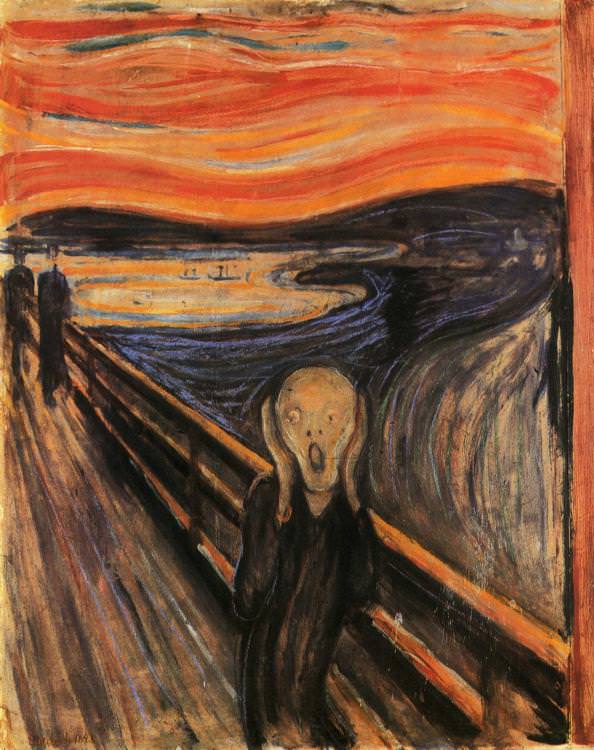The way in which mental illness has been portrayed throughout history has seen those dealing with inner turmoil ostracized and othered. Sure, for someone who perceives the world beyond what is widely accepted as reality, their mind may be wired differently from someone who is considered healthy. However, it is this alternate view of the world that has inspired some of the greatest art through the years. Whether it be visual art, music, literature, or otherwise, there is often a tinge of madness attached to the greats and those who have broken down barriers.
Certain movements are synonymous with mental illness purely for their abstract perception of reality, such as Expressionism. However, even movements that aren’t as visually peculiar, such as the Renaissance, can see key figures branded as ‘mad’ as they see beyond what already exists.
I put my heart and my soul into my work, and lost my mind in the process.
Vincent van Gogh
It is easy to suggest that this labeling isn’t filled with the same connotations that ‘madness’ tends to generate – that it simply means that the creation is born out of profound originality – but that is all in hindsight. Of course, we don’t consider the great thinkers and artists of the Renaissance as crazy, but at the time, Galileo was met with utter derision when suggesting that the Earth wasn’t at the center of the universe. Who’s the crazy one now?

Visual art and mental illness are inextricably linked at times. The self-portrait, for example, can be a portal into the world that the artist sees around. Typically, the only way to make out that we are looking at a self-portrait is the eyes. By making the eyes unambiguous, it affirms that we are viewing the world as they see it. Regardless of one’s mental state, the majority of people’s reality is relayed back to them through what they see, only for our brains to conjure up what it all actually means. For those who are suffering from a mental illness, this unique idea of reality can be so abstract that the confusion leads to a feeling of isolation, because no one can quite understand what it is that they are perceiving.
Vincent van Gogh thought adversely of his mind frame, going on to suggest, “If I could have worked without this accursed disease, what things I might have done,” in one of his final letters before committing suicide in 1890. Thought to have suffered from a plethora of mental illnesses, the sheer volume and absurdity of thoughts that festered within the artist’s head perhaps made it overwhelming to capture what he was observing on canvas. There’s a fine line between a sadness and grief that prompts a cathartic release, and being in the depths of depression which leaves the person strapped to the bed, almost paralyzed with fear.
Van Gogh’s contemporary, Edvard Munch, however, lauded his mental instability. “Without anxiety and illness, I am a ship without a rudder … My sufferings are part of my self and my art. They are indistinguishable from me, and their destruction would destroy my art,” Munch claimed. His diagnosis of neurasthenia, a clinical condition associated with hysteria and hypochondria, plagued much of his life, but also helped to produce some of his best artworks.

It is perhaps unsurprising that one’s perspective on their frame of mind in turn has an effect on their frame of mind. Van Gogh saw his flaws as a curse, whereas Munch viewed them as a blessing. Munch would go on to live til 80, continuing to depict his troubled state of mind, but embracing it nevertheless. Unfortunately, van Gogh’s mental state would worsen rapidly and he took his own life at the age of 37.
This is not to suggest that van Gogh made waste of his talent or that a mental illness is somehow desirable due to the creative perks. However, it is important to let people know that making peace with your perceived flaws can allow you to use your inner demons to your advantage. Paint that abstract painting, record that experimental song, write that book outside the conventional formatting of language and grammar. There’s only one version of yourself, meaning no one else is ever going to the see the world in the same way. Remember that.

Society’s attitude towards mental illness is one of acceptance, but in a social media driven world, people’s inner turmoil is perpetuated by a constant state of comparison. The desire to broadcast a desirable life has replaced the notion that people should be portraying what they are actually living with. It would be a tragedy if one’s life wasn’t reflected through their art, and was simply masked in an attempt to get likes and follows.
By definition, the degree to which we consider something crazy is simply indicative of societal norms. And as society is an ever-evolving beast, what is abnormal is constantly in flux. To some, ground-breaking artists are ‘mad’, but to others, they are simply helping the dormant thinker to view a completely different reality.













